Your skin is one of the largest organs you have in your body. That’s why it’s important to take care of it as thoroughly as possible during pregnancy. Am I right?
Skin changes during pregnancy can be kind of freaky. The changes pregnancy can place on your skin is overwhelming. Women just want to get it right and fewer stretch marks.
While your skin undergoes the various changes it naturally will throughout your pregnancy, you can implement practical methods that work for you to best take care of your skin so that you don’t wind up feeling like you could have done more at the end of your pregnancy.
When it’s all said and done, your skin is bound to change many times throughout your pregnancy. Your complexion and the elasticity of the skin of your belly for instance will present the most noticeable changes for most women.
What is the complexion and how does it change during pregnancy?
Your skin color can change during pregnancy, becoming darker all over. Some women will experience dark patches showing up all over their body or just in a few places.
You might notice that your nipples, freckles, and birthmarks are becoming darker as your hormones ramp up.
These changes to the complexion of your skin are due to the hormonal changes happening within your body – estrogen and progesterone are the two most common hormones to be elevated during pregnancy.
Estrogen and progesterone are exponentially high during pregnancy. In fact, you will make more estrogen in one pregnancy alone compared to your entire lifespan.
It’s important to change your skincare routine along with pregnancy to help your body adjust to these changes during pregnancy and return to the skin appearance you’re used to after you give birth.
You may develop a dark line on your abdomen called a Linea Nigra that will disappear after a few weeks of delivering
Toward the very end of pregnancy you might develop what is called a Linea Nigra, this is a darkened line on your belly. Usually, this appears during the last trimester of pregnancy, fading anytime between a few weeks to a few months postpartum.
Dark circles are common for women during pregnancy especially if you had them previously
Hormones are not only responsible for the darkening of certain areas of your skin. They are also responsible for bolder dark circles underneath your eyes.
Hormones cause blood vessels to dilate far more than pre-pregnancy – and guess where dark circles stem from – that’s right – pooled blood underneath your eyes.
The blood vessels are more outspoken during pregnancy, and it’s completely normal to still have them after you give birth for a while.
How to ease dark circles during pregnancy at home
There are a number of ways to ease the dark circles you might notice accumulating during your pregnancy, but the most effective seems to be rose water or cucumber treatment.
If you’ve ever seen the movie stars with cucumbers in their eyes relaxing by the poolside, now is your time to be that movie star.
You can give yourself a cucumber treatment right at home by slicing a few cucumbers and placing them on your eyes for 20-minutes give or take.
Rosewater can be absorbed in cotton balls and placed over your eyelids for the same effects. Don’t stress, because stress makes dark circles worse – just trust they will let up when the time is right.
View in gallery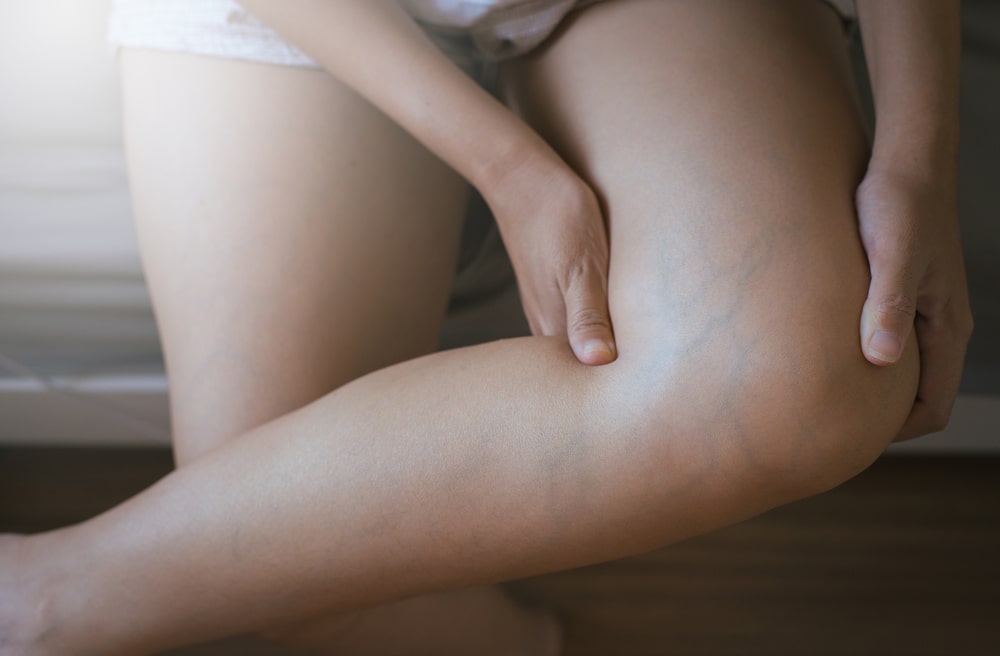
Varicose veins are often more visible and develop in abundance during pregnancy don’t worry though exercise can help ease their prevalence
There are a number of skin changes that happen during pregnancy that you might not have noticed beforehand, varicose veins being one that makes women’s jaws drop.
One day you’re sitting on the toilet, look down, and notice big red veins running down your legs. They seemingly appeared out of nowhere, and you don’t know what they are – but you do know you don’t like them.
Or maybe they don’t bug you very much, either way, they are completely normal during pregnancy.
Varicose veins occur from the massive expansion of blood volume during pregnancy coupled with the pressure your uterus is now putting on the lower half of your body.
How to ease varicose veins during pregnancy at home
Varicose veins can be red, blue, or black or a mix of all three colors. Some women find varicose veins to be uncomfortable – if this is the case for you try the following:
- Don’t sit with your legs crossed
- Sit or lay with your feet elevated
- Take your daily walks or do small exercises as often as possible
- Your inferior vena cava is on the right side of your body so you will want to sleep on your left side to relieve any pressure on it
Thankfully, varicose veins should let up soon after giving birth, the pressure from holding a baby inside your womb for 9-months is instantly relieved moments after birth.
The good thing is that most of the time pregnant women are the only ones who notice varicose veins on their legs.
Your belly expanding for your baby causes the most obvious changes to your skin during pregnancy
As your baby grows so does your belly. Right from the start of your pregnancy, on the inside many changes are happening – as your womb presses on your abdominal muscles, they will start to stretch along with your growing fetus.
View in gallery
To reduce cramps with your stretching muscles be sure to drink plenty of water and eat a wholesome diet. Your muscles need to stay hydrated and so does your skin to stretch appropriately for the entire 9-months you’ll be pregnant.
As your belly expands you might have feelings of excitement, uncertainty, and even feel a bit nervous. I know I felt a little nervous with my first baby’s – my twins!
I wasn’t sure if my belly would get way too big for my body to handle, but the more it grew, the stronger I felt.
When you’re pregnant you can expect your abdomen to physically expand, revealing to the world that you’re growing a child. While this is surely a wonderful time for every mother-to-be it can also be a time of overwhelming uncertainty.
When you’re uncertain about what physical changes to expect in the coming months of pregnancy, it can make you feel nervous about what bodily changes are happening to you for your baby to fit in your body.
Please be reminded that your body is doing a healthy thing by adjusting in all the right ways in order to grow your little baby human. Let’s go over what you can expect throughout all of the phases of pregnancy as your belly grows.
The physical changes that affect your skin during pregnancy can be generally organized into the three phases below
You can expect that your belly will grow at a rate unique to you, but similar to many other pregnant women.
Your baby will measure roughly the week pregnant you are during your visits with your midwife, example: if you are 32 weeks pregnant you will measure 32 inches with a tape measure.
Conveniently, the measurements on the tape measure your midwife will use correlates with the number of weeks pregnant you are. The measurement is taken from the top of your pubic bone up to the top of your womb.
Midwives are skilled at feeling this and have had plenty of practice to ensure you measure accurately each week.
Though, you can learn to do this at home too – when I found out I was surprisingly pregnant with my 5th baby I did this at home to roughly guess how far along my pregnancy was – I was 1 week off.
With each trimester you can expect a certain amount of growth, bringing about physical changes for the skin, muscles being ready emotionally to accept these changes, helps tremendously.
The first trimester of pregnancy brings hormonal changes to the skin like facial acne
View in gallery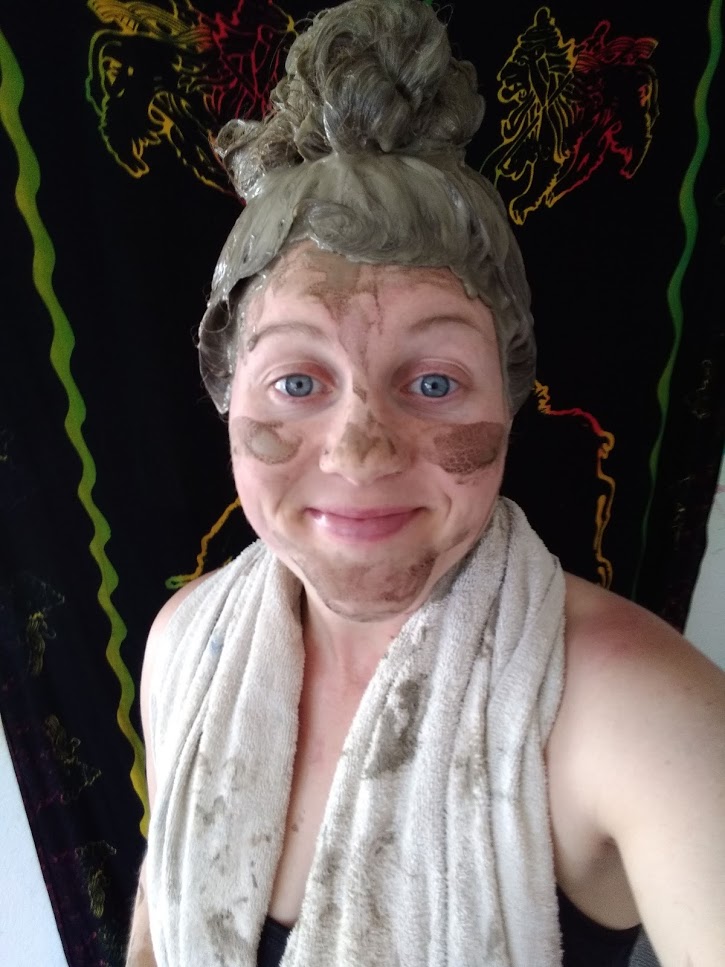
During the first trimester, your skin will undergo many hormonal changes deep within the body that could reflect outwardly in the form of acne on your neck, chin, and face as a whole.
You could also become quite dehydrated from morning sickness.
If you’re asking what causes the unexpected breakouts during the first trimester of pregnancy – dry skin and lack of nutrient absorption from morning sickness are the main culprits.
Your skin might become dry and(or) flaky causing unexpected acne breakouts
I recall that during the first trimester in a few of my previous pregnancies, my facial skin would get so dry that my lips seemed to be chapped for weeks on end.
In addition to my chapped lips, the pimples I tried to pop wouldn’t heal for up to a week seeming raw and cracked. My acne always seemed to get worse rather than better – bleeding all of the time during the first trimester.
You might notice your facial acne before you have confirmed you’re pregnant
Of course, these bouts of acne usually happened long before I knew I was actually pregnant. Acne seemed to be one of the very first thing’s that happened during pregnancy due to the hormonal changes happening within my body.
Each pregnancy could be slightly different – depending on how your hormones pan out – always prepare for the worst. You can take measures to avoid or manage facial acne and dry skin long before it happens.
Morning sickness is a major culprit of vitamin, mineral, and nutrient depletion
Additionally, your skin could be going through bouts of acne due to the way that morning sickness depletes the nutrients your body would have otherwise used to maintain optimal skin health.
When you have morning sickness at the beginning of your pregnancy, your body basically applies this internal rule that states growing your baby, and your essential needs come first 100% of the time.
This sends all of your available vitamins, minerals, and hydration stores to those places.
If your body doesn’t have adequate nutrients to supply your internal organs as well as your largest organ (your skin), your skin will suffer first because it comes last to the other newly established demands your body has during pregnancy.
Keeping up with proper hydration needs, and taking a multi-vitamin is crucial to maintaining desirable skin health during pregnancy.
How should I take care of my skin when I’m pregnant?
When you first become pregnant it’s important to change your skincare routine as needed, to help your skin stay happy.
That could mean trying out a few less invasive methods to care for your new pregnant skin in place of the regular non-pregnant skincare regimens that you’re used to.
Trying a new routine with gentler products will help you find a happy balance for your skin during pregnancy.
It can be tricky to re-establish that delicate balance when you first become pregnant – you might find that you have no set routine anymore – you might have to switch up your skincare routine a few times over the 9 months you’re pregnant.
Your skin constantly needs different vitamins, moisturizers, and care to stay in the best shape possible – this is 10x more true during pregnancy.
You can ease the hormonal acne in your first trimester by using the less-is-more rule when applying your skincare products
Less really is more when it comes to soothing your newly pregnant skin.
While your skin adjusts to the rampant hormonal fluctuations aim to use products with less potentially irritating ingredients in them – applying less overall can help too.
A smoother adjustment period at the beginning of your pregnancy for your skin means you will have fewer breakouts that are usually caused by morning sickness, dry skin, and an increase in your hormones.
You can help your skin by paying attention to how oily or dry it is each day, washing with warm water or a gentle cleanser when needed, and applying any moisturizers only as needed.
You might notice that your skin isn’t as responsive to the products you generally use and save for post-pregnancy.
Before pregnancy your skin was able and ready to absorb anything you used on it, now your skin won’t be as responsive and potentially a lot more sensitive.
Try to discontinue using products that contain the following ingredients;
- Salicylic acid
- Parabens
- Benzoyl peroxide
- Hydroquinone
Make sure to dis-include any harmful products in your skincare products
View in gallery
You might even want to make a homemade facewash or wash your face with pure jojoba oil for a few months during the first trimester of your pregnancy to keep your skin soothed.
There are many ways to gently wash your face during pregnancy using ingredients right at home. If you don’t have the ingredients, they are usually simple to source from your local grocers.
Below are a few recipes and/or all-natural ways to wash your face. If your regular facewash is no longer suitable for your skin during pregnancy because of the harsh additives your regular facewash contains.
Keep in mind that just because a facewash is expensive and sold to be one of the more organic facewashes. It doesn’t necessarily mean that it will work well with your skin.
When trying out a new facewash or oil on your face as a cleanser, it’s important to apply it on a small area first ensuring you won’t have an allergic reaction to it prior to using it on your entire face as a whole.
Home-made face wash is easy to make and practical to implement into your skincare regimen
Soapnuts are one thing that I highly recommend incorporating into your skincare regimen once you become pregnant – they are highly adaptable to your specific skin type.
If your skin is oily you can boil the tea longer for a more drying facewash – if your skin is on the dry side – boil the soap for less time for a moisturzing face wash.
soapnuts are actually a berry that produces saponins(soap) when boiled. I have been using these in my hair and skincare regimen for the last five years, and I try hard to spread the word about how amazing they are!
Upon boiling the soapberry’s produce soap – 100% organic shampoo, conditioner, facewash, even laundry detergent! They are the most versatile form of organic soap on the market.
It doesn’t have a fancy smell, and they don’t create sudsy soap but they are the purest form of achieving an organic homemade soap.
It’s simple to make soapnut facewash by following the instruction below:
Step one: Combine 4 quarts of water and 6-8 soapnuts contained inside of a large tea strainer ball – in a large pot.
Step two: Gradually heat the water to a boil, increasing the heat in small increments until you reach a boil at medium heat.
Be sure to not to start the process at high heat to begin with, because if you do the suds from the soap tea will splash over the sides of your pot if the water heats up too quickly.
You’ll need to gradually increase the heat of the water to a boil at medium heat.
Step three: Leave your pot of water and soapnuts to boil for 30 minutes to 1 hour over a medium heat boil.
Check if the soapnut tea is finished by looking at the color. If the color of it is auburn that you can’t see through then it’s ready – if you can still see right through the tea it’s not ready yet.
The less colored the finished product is, the weaker the soap will be. If you brew soap tea that isn’t very strong it will cleanse your face while leaving your natural oils on your skin.
If you tend to have oily skin it might be wise to brew your soapnut tea a bit darker in color that way your face will feel completely clean after washing it.
Expect to moisturize your face with coconut or jojoba oil afterward if you brew a stronger tea as it might be too drying for your skin.
Fridge storing: You can store your tea for up to 2 weeks in your fridge in an air-tight container without it going bad or growing mold.
Freezer storage: Store your soapnut tea in a freezer-safe bag for up to 6-months in the freezer. When you’d like to use it, pull it out and let it defrost the morning of the day you’ll need to use it.
You can always run the freezer bag of your soap tea underneath hot water to defrost it from being in the freezer if you need it right away.
Use your soapnut soap for all of you and your baby’s body care needs during this special time
Enjoy this soap nut tea as a gentle facial cleanser, shampoo, and conditioner while you’re pregnant that is totally organic in every way. You can’t go wrong with soapnuts they are also safe for infants and baby shampoo after you have your baby.
The second trimester usually brings skin tone changes
If you used to ‘tan easily’ prior to pregnancy, you might see dark spots darkening or appearing for the first time ever in your pregnancy – melasma happens.
It’s important to take care of your skin in the sun to prevent melasma from worsening. During your second trimester of pregnancy, it’s best to use a 100% mineral sunscreen containing zinc and other mineral-based ingredients.
Practical skin-care routine for pregnant ladies
View in gallery
It can be incredibly disheartening how much your skin can change once you become pregnant.
That said, it doesn’t mean that your skin will certainly change when you become pregnant some women don’t experience skin tone changes at all during pregnancy.
Though, it can be the first thing you notice is making dramatic changes, causing you to question what the heck is going on with your hormones – am I pregnant?
You certainly want to pay attention to how your skin is changing during pregnancy and adjust your skincare routine accordingly.
If your skin becomes too dry during pregnancy you can apply gentle oils to moisturize it and treat stretch marks
When treating your skin ailments during pregnancy it’s best to have chemical-free products to do the job needed. Your skin might get worse if you use a product that is irritating for it.
One sure way to avoid irritating your skin, instead of solving the problem is to use simple ingredients that moisturize but don’t contain additives or preservatives.
Most beauty products contain chemicals that your skin is more sensitive to during pregnancy. If you use a skin-care product be sure to read the ingredient label beforehand and test it on a small area of your skin.
Vitamin E oil will combat stretch marks
View in gallery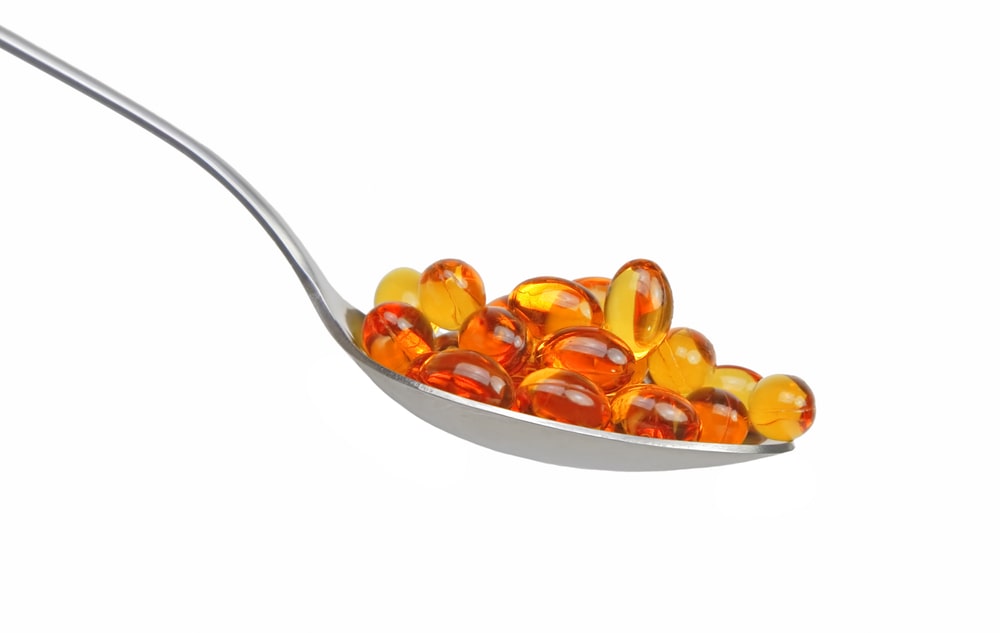
Vitamin E oil is one of the best oils to help combat stretch marks during pregnancy. Vitamin E oil adds elasticity and moisture to your skin.
Stretch marks happen when your skin loses elasticity over the course of your pregnancy as your belly grows -especially in the final stages of pregnancy.
Vitamin E combats dry flaking skin in addition to reducing stretch marks, it does this by adding intense moisture to your skin as it expands. One of the good things about Vitamin E oil is that it absorbs into the skin incredibly well.
You’ll find that pure Vitamin E oil feels sticky to the touch, so if you use it at night put a pillowcase on your pillow, and sheets on your bed that you don’t mind getting stained.
How to use Vitamin E oil on your skin and face during pregnancy
For best practice apply a few drops of vitamin E oil on your skin and face on clean skin prior to going to bed at night. This gives the oil time to nourish your skin as it renews itself overnight.
If you choose to apply pure vitamin E oil be prepared for it to stain your clothing and feel sticky.
Sometimes during pregnancy, our facial skin can go through bouts of breakout – if this is the case for you then wash the vitamin E off after 15 minutes.
Vitamin E also helps hyperpigmentation and protects your skin from free-radical skin cells
If you’re someone who tends to stay out in the sun for hours at a time or already have some skin ailments from being out on the sun Vitamin E might be your new best friend.
This nourishing oil is full of rich antioxidants that help combat skin discoloration during pregnancy called hyperpigmentation.
What is hyperpigmentation of the skin during pregnancy?
Hyperpigmentation to your skin during pregnancy can look a few different ways and is caused by the increase of estrogen and progesterone in the body during pregnancy.
Your hormones increase at the start of pregnancy which can result in skin discoloration.
Melasma is called ‘the mask of pregnancy’ and when this appears from a steep rise in pregnancy hormones, you might notice that you have begun forming dark spots on your skin, your freckles appear darker, or you have a dark line forming up the middle of your belly called a linea nigra.
This happens as your skin begins producing far more melanin than prior to pregnancy.
You might notice that your areolas are darker than before, as well as your moles. Adding vitamin to your beauty regime will help negate this from worsening.
[amalinkspro type=”showcase” asin=”B00VFYYAC4″ apilink=”https://www.amazon.com/dp/B00VFYYAC4?tag=mominformedcom-20&linkCode=osi&th=1&psc=1″ new-window=”true” addtocart=”false” nofollow=”true” sc-id=”4″ imgs=”LargeImage” link-imgs=”false” specs=”Prenatal Formula with new premium ingredients, all in one delicious serving: Beta Carotene, Vitamin B6, Vitamin K2 & Choline (Packaging May Vary).~~~Non-GMO. Free of milk, eggs, peanuts, tree nut allergens, fish allergens, shellfish, soy, gluten and wheat. No synthetic colors or artificial sweeteners/flavors. 3RD PARTY LAB TESTED. No refrigeration required” btn-color=”#ff9900″ btn-text=”Check Price” alignment=”aligncenter” hide-prime=”0″ hide-image=”0″ hide-price=”0″ hide-button=”0″ width=”750″]SmartyPants Prenatal Formula Daily Gummy Multivitamin[/amalinkspro]
The 3rd trimester of pregnancy sometimes bring uncomfortable rashes like PUPPS check your skin often for this to notify your midwife
Congratulations, you’ve gotten through the various skin changes of the first and second trimester, and you’re nearing the end of your pregnancy when suddenly you break out in an itchy rash.
You can thank PUPPS or some other rash that causes intense itching, or maybe it’s just your stretching skin. For various reasons, the 3rd trimester can be one of the most difficult to go through regarding skin issues for women.
At this point, most women would prefer a bit of unsightly chin acne compared to a belly that will not stop itching regardless of how much your scratch it.
I have had babies in the winter and most of my babies in the summer months, and my skin had at least one week of terrible itching in the 3rd trimester of every pregnancy.
Let’s look into what really goes on with our skin during that last trimester of pregnancy, and what to do if you end up with a rash you’re unsure of.
PUPPS or Cholestasis are the two most common skin rashes to occur in the last trimester
You weren’t always so itchy, or were you – it’s been a week, and no matter how much you moisturize your skin the itching won’t stop – sound familiar?
This could be from a rash called cholestasis, it happens when your liver starts having a hard time keeping up with being pregnant.
You see when you’re pregnant your liver is already working much harder to filter out excess toxins and help your placenta function properly.
At the end of pregnancy, the liver is believed(by doctors) to sometimes slow down when hormones rise, therefore allowing the liver to release bile at a much slower rate which then releases salt stones into the bloodstream.
When salt stones are released into the bloodstream, it results in a lot of itchy skin. Sometimes rashes and intense itching form on the hands and feet, while there may also be yellowing of the skin and the eyes.
The itching isn’t entirely the part that midwives become worried about when a woman develops cholestasis, even though that part is uncomfortable for pregnant ladies it isn’t the reason that early delivery becomes a possibility.
View in gallery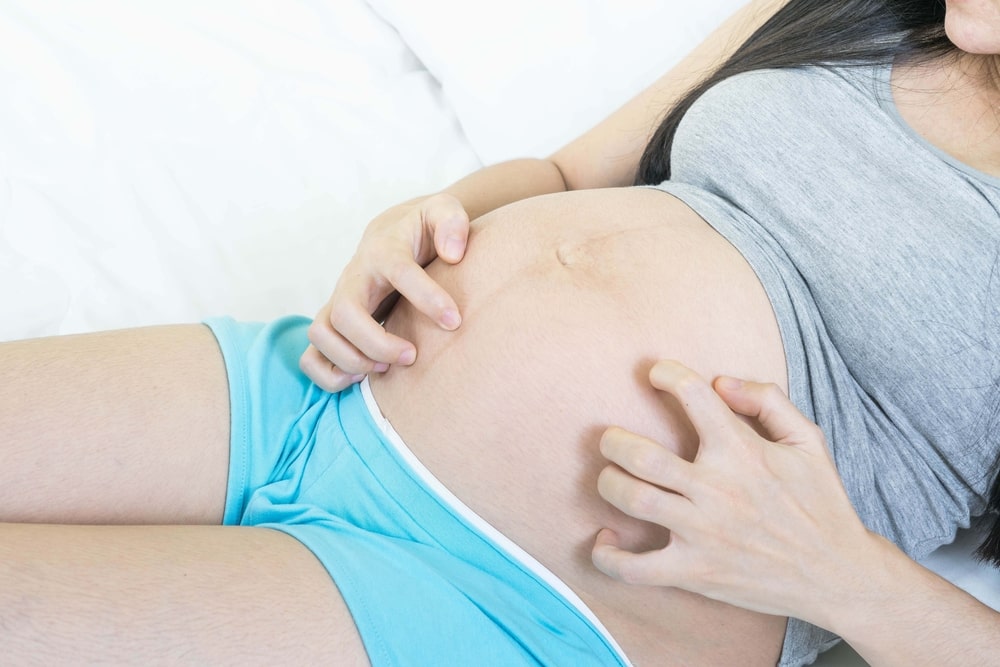
Sometimes early delivery is recommended when cholestasis evolves because it makes it harder for the body to absorb fat, when it’s hard for the body to absorb fat, then poor vitamin K intake happens which affects the blood clotting factors.
Complications caused by cholestasis can develop for the baby though rare
There are a number of complications that can possibly develop in an unborn baby if a mothers body develops cholestasis, these complications are quite rare but nonetheless need to be looked out for in these circumstances;
- Stillbirth, which is the death of a baby before being born
- Premature birth
- Meconium staining can be breathed in by the baby, which causes lung issues. Meconium is a sticky brown or green substance that accumulates in a fetus intestines, that is generally passed after birth – though in this case the baby could pass it while in womb and breathe it in.
Is there a way to prevent cholestasis in mothers during pregnancy?
There is no known way to prevent this ailment at the end of pregnancy though, home remedies once you have developed this condition to help ease and manage symptoms.
Below is the best approach to relieve the symptoms you’re experiencing if you believe you have developed cholestasis:
Seek further advice from your midwife by telling your care team as soon as possible when planning a homebirth
Don’t be afraid to tell your midwife that you believe you’re developing this condition late in pregnancy, even though you might be directed to have an early delivery in the hospital.
It is the safest practice to let your midwife know as soon as you developed any itching that lasts more than one week (despite trying to soothe it), yellowing of the skin, or a rash on your hands or feet.
It could be a non-harmful rash, or it could be a rash that needs attention as soon as possible – you won’t know until you speak with a professional.
Even if it is something that is potentially harmful, you can start preventative measures, and develop a plan with your midwives once you know for sure what is going on.
Take oatmeal baths to ease the intense itching
Anytime you have itching on your skin, that doesn’t seem to get better on its own you can implement oatmeal baths in your own bathtub.
Oatmeal baths are inexpensive and simple to do. You will just need quick, old-fashioned, or instant oatmeal and a bit of warm water.
[amalinkspro type=”showcase” asin=”B07TV7ZHT2″ apilink=”https://www.amazon.com/dp/B07TV7ZHT2?tag=mominformedcom-20&linkCode=osi&th=1&psc=1″ new-window=”true” addtocart=”false” nofollow=”true” sc-id=”4″ imgs=”LargeImage” link-imgs=”false” specs=”18 ounces of Happy Belly Old Fashioned Oats~~~Whole Grain Rolled Oats~~~Low in saturated fat and 0 mg cholesterol~~~If you like Quaker Old Fashioned Oats, we invite you try Happy Belly Old Fashioned Oats~~~An Amazon br” btn-color=”#ff9900″ btn-text=”Check Price” alignment=”aligncenter” hide-prime=”0″ hide-image=”0″ hide-price=”0″ hide-button=”0″ width=”750″]Amazon Brand – Happy Belly Old Fashioned Oats, 18 Ounce[/amalinkspro]
PUPPS is also known as pruritic urticarial papules and plaques of pregnancy is a rash that may form a hive-like rash along with extreme itching
PUPPS is non-harmful internally, though along with the scratching women could develop an infection – it’s important to be mindful of how you’re itching.
It’s best to speak with your midwife if you think you might be developing PUPPS, they can advise further care for your skin.
A red sometimes raised rash, that doesn’t contain any blister or fluid-filled bubbles can form specifically in the stretch marks and could spread to the thighs, breasts, and buttocks.
If you notice a rash that resembles heat-rash starts to form on your stretch marks, it’s best to take measures right away to soothe your itching skin before it can spread further.
Doctors don’t positively know what induces PUPPS but it is thought to form from the extreme stretching of the abdominal skin at the end of pregnancy.
This rash is most commonly seen in first-time pregnancies because this is the first time the skin has stretched such a large amount, though, the stretch marks in subsequent pregnancies also create an ideal space for PUPPS to take root.
How PUPPS is treated during pregnancy
When a woman forms PUPPS it’s a matter of easing the symptoms until it subsides. Sometimes the rash won’t dissipate until after a woman delivers her baby. Below are the best way’s to treat PUPPS at home;
- Apply coconut oil as needed
- Keep your skin dry and cool especially in the summer heat
- Take oatmeal baths often
- Do not itch the skin, instead pat as much as possible to not break the surface of the skin
- Wear loose fitted clothing
- Take a non-drowsy Benedryl
Anytime you see a rash forming on your skin at the end of pregnancy it’s a signal to clean up your diet
At the end of pregnancy, your body is working on overdrive to keep up with the demands of pregnancy, which means everything you eat counts for you or against you.
If you notice a rash forming anywhere on your skin at the end of pregnancy take another glance at what you’ve been eating.
In pregnancy whole-foods that offer nutrition without added chemicals and preservatives are best. Eating a well-balanced diet gives your body everything it needs to take care of your baby and your organs – including your skin.
It’s typical to have acne breakouts when eating junk food, but the effects extend further than breakouts.
View in gallery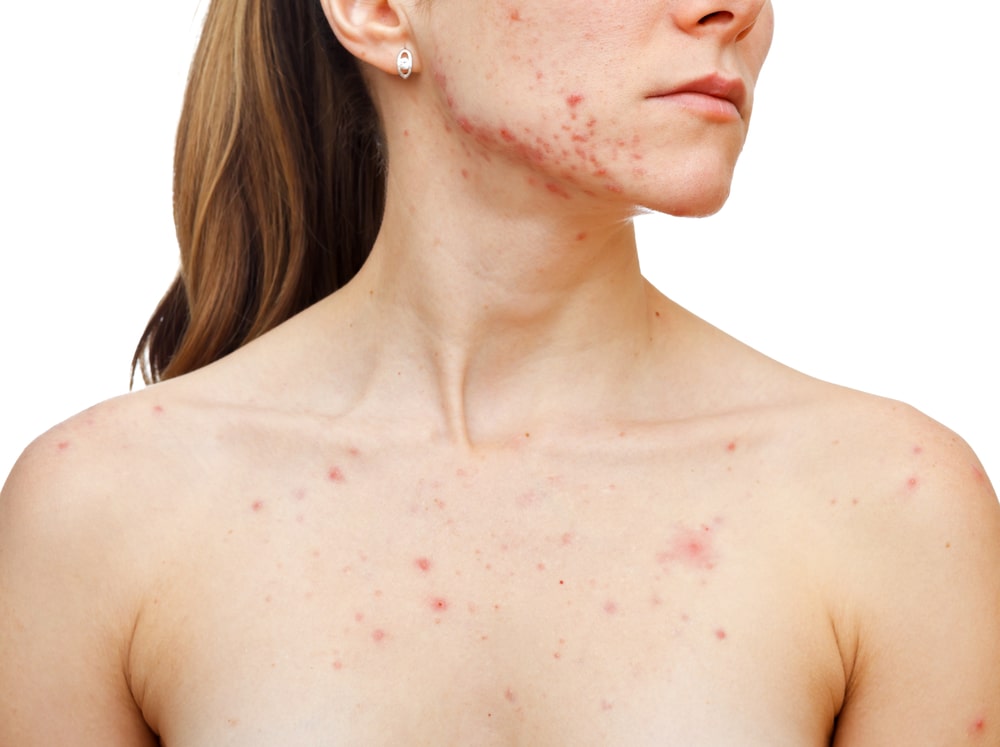
The skin is your largest organ, and things like eczema and unnecessary itching can occur when junk food is commonly eaten during pregnancy. Think of it as pregnancy is the time your body is extra sensitive – nourish it in every way you possibly can.
In Conclusion
Caring for your skin might seem confusing, and like extra work during pregnancy. But, try to bring a caring and loving routine to your skincare – even if your skin has completely gone haywire with pregnancy.
It gets the best of us, trust me. And sometimes, regardless of how much we try to keep things in order, our skin just isn’t the same as prior to pregnancy.
Sometimes we have to wait it out and stay product-free until our baby is born to have the skin we’re used to back. Skin is a delicate thing, and hormones are mostly to blame for the random behavior of our skin.
Infuse your mind with patience and understanding for the changes your body and skin are going through during pregnancy, focus on the positive things happening.
A positive attitude is a large contributor to healthy vibrant skin, when you’re overwhelmed with stress, you might find your skin acts out even more.






